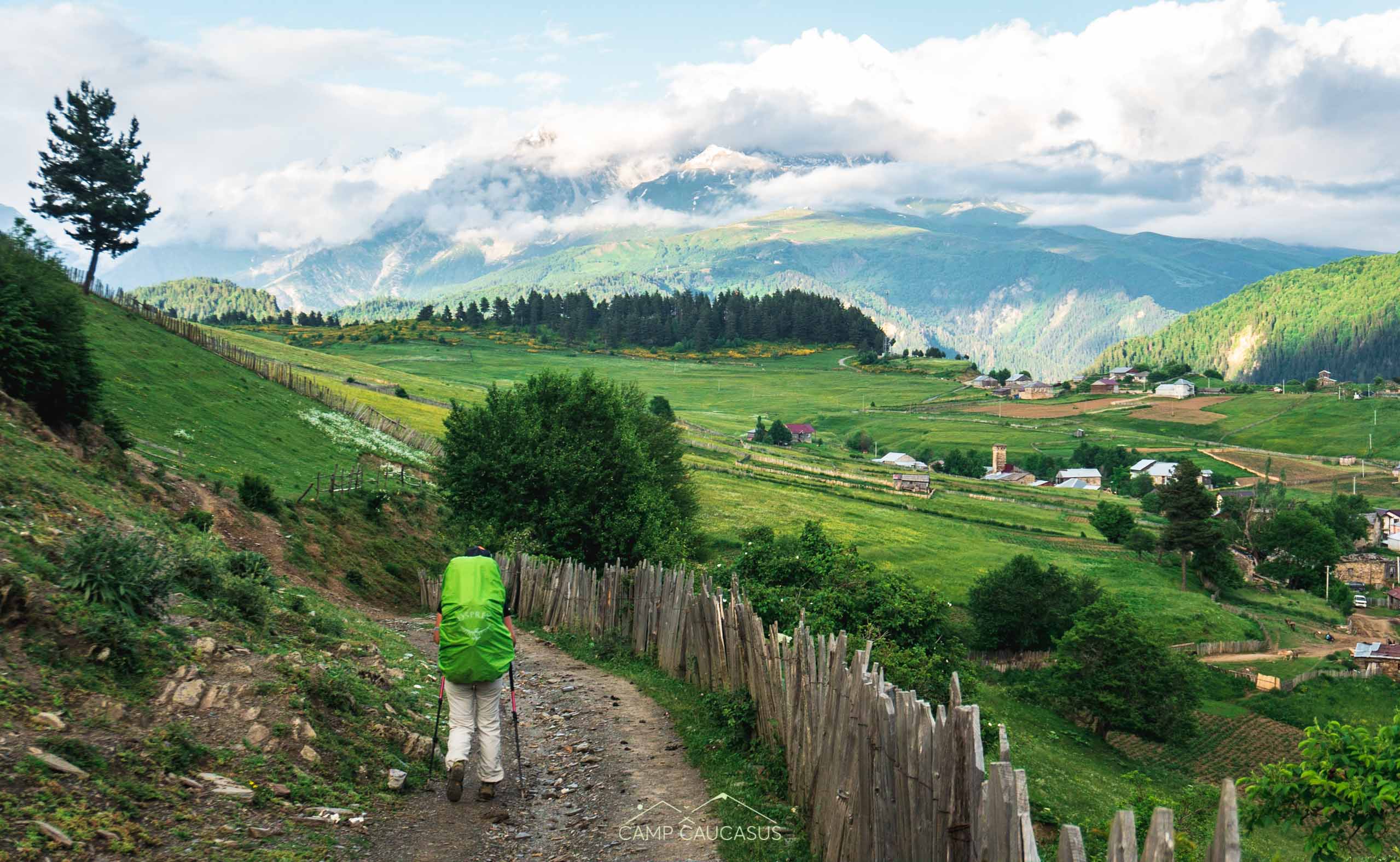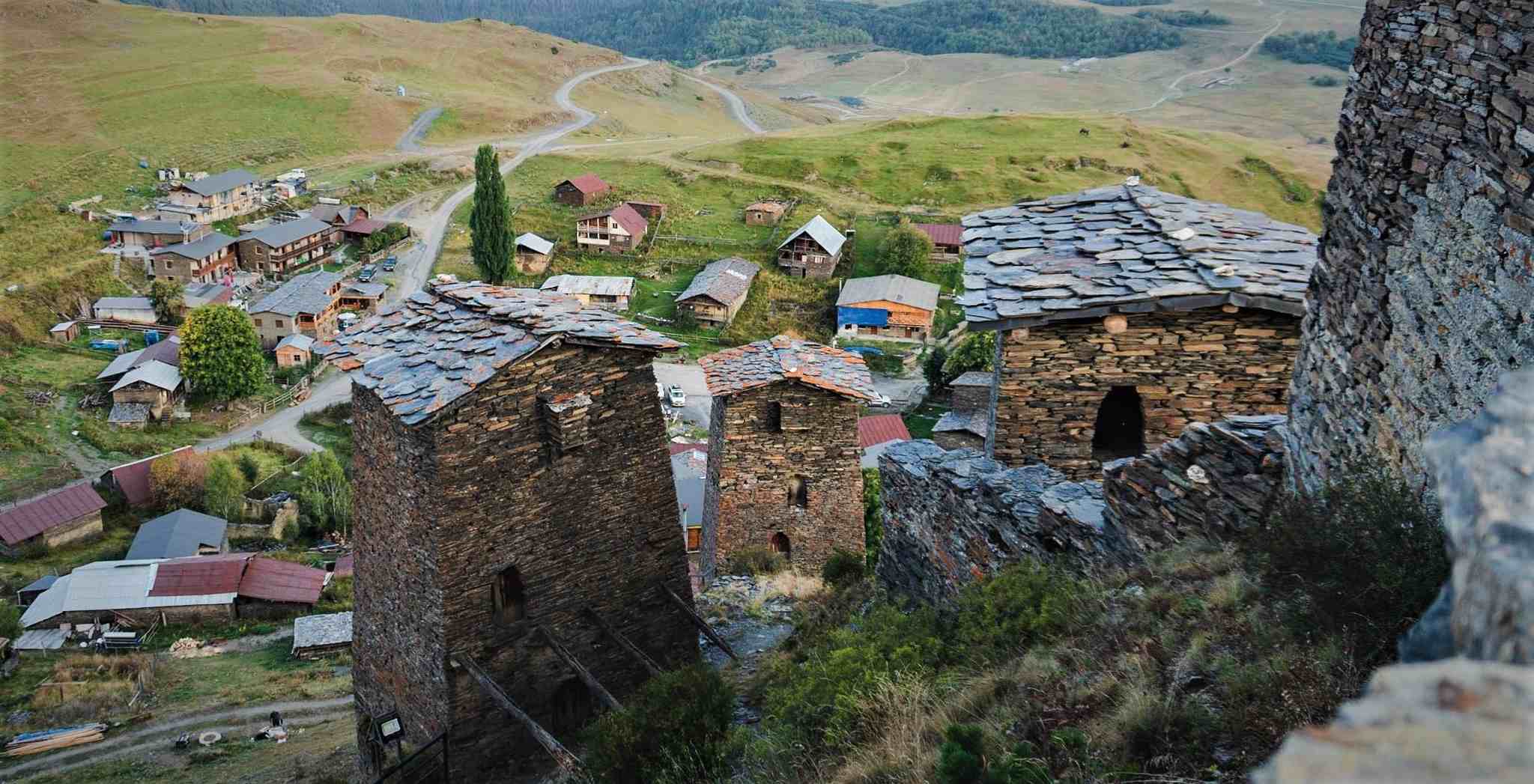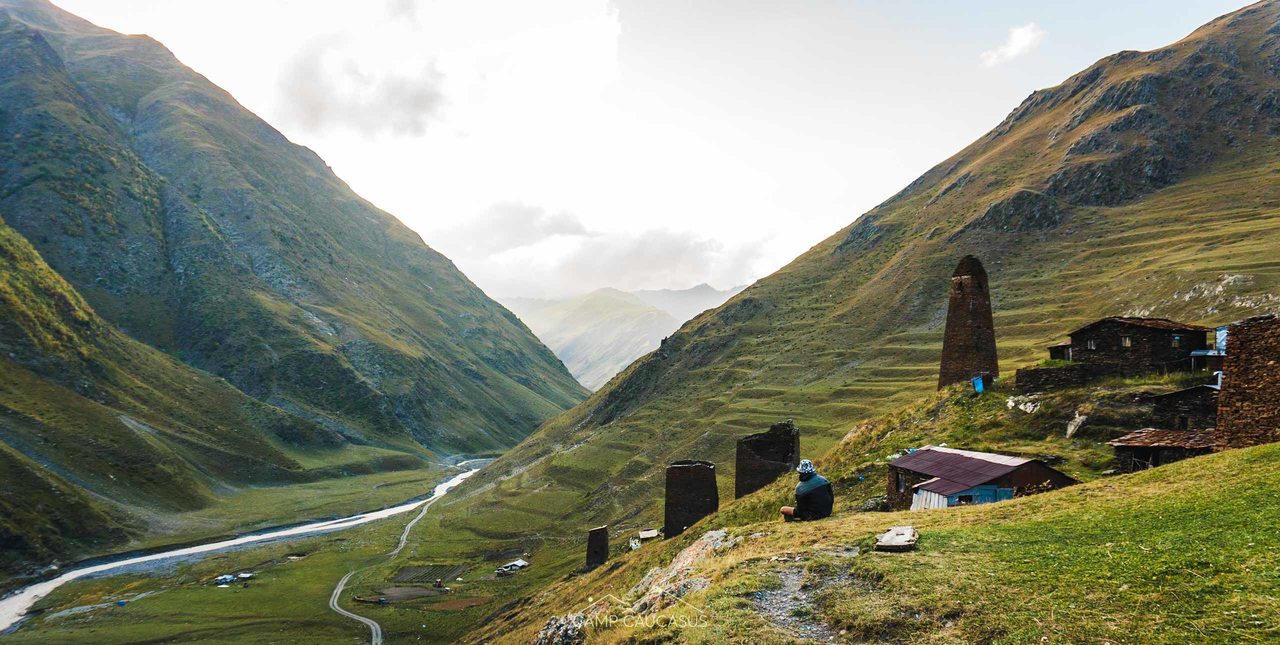Last updated: Apr 14, 2020
Many trails in the world have been founded a long time ago and have a rich history behind it. But also there are many yet to discover and develop. The Transcaucasian long-distance hiking trail is still under development in the Caucasus through Georgia and Armenia and Azerbaijan. Anyway, it is already possible to hike and might be a piece of cake for those adventure lovers who want to avoid overcrowded trails and enjoy the pure wilderness.
And yet, it already has an inspiring story about how it got its marks on the map and even while the trail is still on spreading works, it already has been referred to as one of the world’s greatest places by Times magazine in 2019.

A short history of the Transcaucasian trail
So what is the story behind this? The trail was launched by adventurer Tom Allen just in 2016. He, the team of local experts and with the help of an international volunteer team, continued the trail building program. This volunteer-based initiative is planning to link Armenia, Georgia, and Azerbaijan via a 3000 km network of paths, following the Greater and Lesser Caucasus Mountains and connecting roughly two dozen national parks and protected areas, to make the region more accessible. Although it is still developing, the movement is growing fast because it just has jaw-dropping geography and potential to it. The trail connects diverse communities and ecosystems, providing lasting and wide-ranging benefits for people and the environment.

Why should you put the Transcaucasian trail on your list?
The Transcaucasian Trail is for you if you are looking for a long-distance adventure in the wilderness, with rare human meetings and passing unspoiled villages. The Caucasus mountains are the biggest and highest mountain system across the European region. This is less developed in tourism than other EU mountains, which gives you a chance to enjoy the great outdoors and not meet people for days. Local villages look frozen in time, for hundred years ago and mountain views are like from another planet.

Another remarkable thing is the local people’s hospitality. According to Caucasus traditions, guests in the house are a gift of gods. One more positive thing is that inhabitants of villages on the trail are not so crowded with tourists yet. A lot of villages are hard to achieve, and because of inner migration, it became more empty. So people welcome hikers with true happiness mainly.
Only prices can compete in kindness with citizens. If you are from central Europe and looking for a budget vacation it is a perfect destination. The region is cheap itself, and there are a lot of low-cost flights to Tbilisi and Kutaisi, Georgia in our days. Compared with the Alps it will be at least ¼ of pricing for food, wine, transfers and other things you may need.

The highlights of Transcaucasian Trail
Upper Svaneti, Georgia
In Georgia, the trail takes you through Upper Svaneti, which is astonishing itself. It offers 140 km long and wild trails with huge elevation changes. It is one of the most spectacular regions of the Caucasus which is home for iconic peak Ushba (4710) which also has been called Killer Queen by alpinists, for its tough and unpredictable summit route. And the highest village in the European region Ushguli (2405m) is in Svaneti. This region is inhabited by unique folk Svans with its own language and architecture. Those Svan towers which are part of UNESCO heritage you can see along your trip.
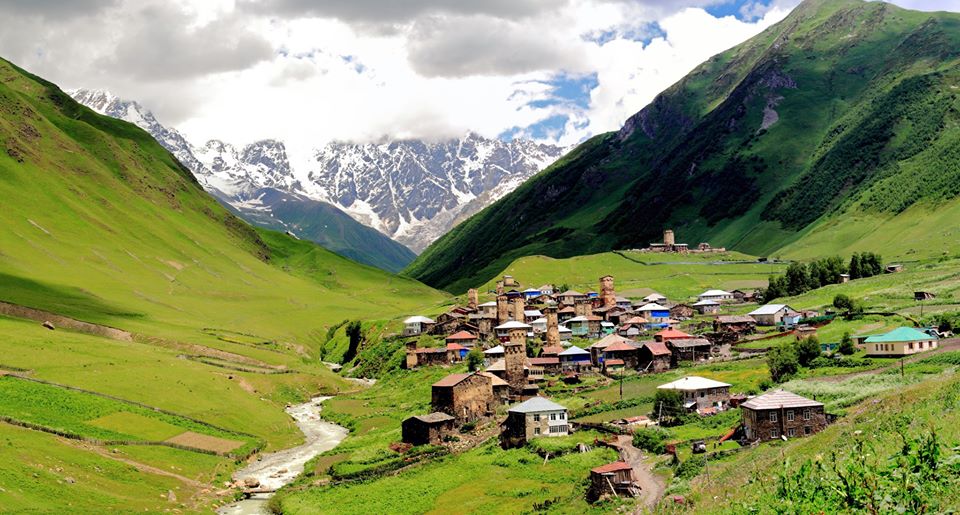
This is the best-marked section of trail, that also offers some parts of wilderness with small villages in the middle, where you can take a rest. The tent is necessary if you want to manage the whole trail, but in some parts, you can stay in guesthouses too. There are rivers on the trail, and bridges are washed off time by time, so be ready to cross rivers in fast water. If you are traveling for a high and remote mountain trekking experience this part is for you.

Dilijan National Park, Armenia
It takes an 80 km long section of trail of true soft climate mountains covered with forests. It is possible to overstay indoors or also under the open sky. It is one of the oldest and most developed national parks in Armenia that offer extra adventures on a road like paragliding, climbing at the Sarcapat area.

Also, it is interesting to spend one day to summit Mt. Apakekar (Abeghakar) (1700m). The region is rich with mineral springs and lakes, which are connected with trails.
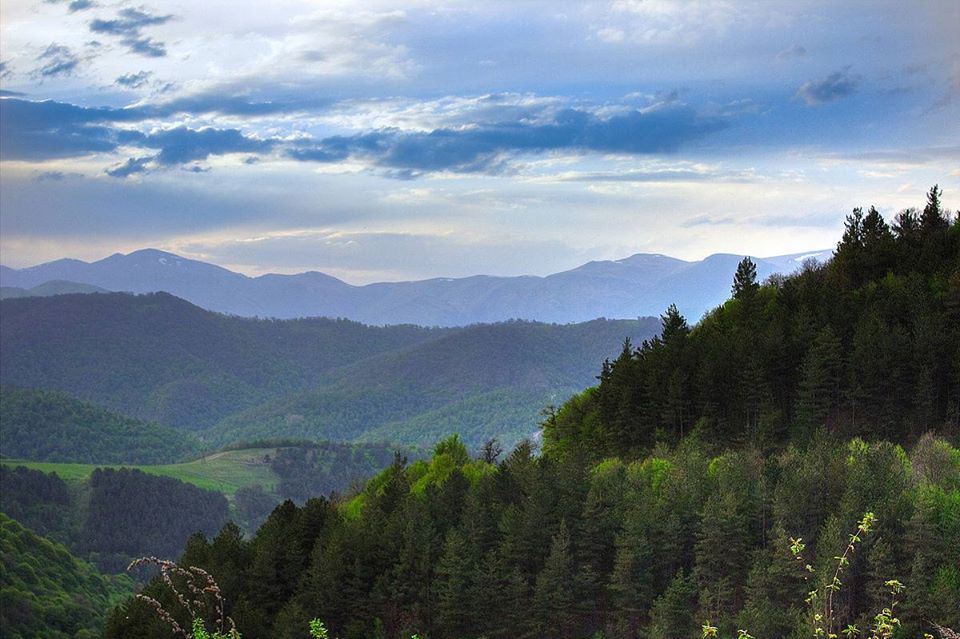
One of the most popular is from Parz lake to Gosh, on this forest trail you will find lakes, ancient monasteries and even wild deer reserves. As already mentioned, the national park is one of the oldest in the country since 1959, meaning that it’s quite popular. So you will meet people and family hikers more often than in any other place.
The Gegham Mountains, Armenia
The Gegham Mountains are incredibly beautiful, the unmarked trail there will take you on a 114km route over beautiful Sevan lake.

What is amazing about it is that you can combine trekking with ascending Mt. Azhdahak 3597m. It is not as remote as others, because it is close to Yerevan and popular among shepherds who bring a lot of cattle there. Which on the other hand makes it impossible to swim, and if you don’t like to share drinks with locals you may choose more remote routes. We advise to take GPS there for sure, in fog navigation is very hard.
Vayots Dzor, Armenia
It offers 125 km of interesting terrain. The thing is that this place suffered from a series of earthquakes in the 7th century, which made terrain fascinating with plenty of caves and gorges. Also, it is a less populated area in Armenia but still, it is possible to spend every night in guesthouses. Fits best for hikers who want to combine nature and historical experience exploring also old castles and monasteries. The trail is mainly marked.

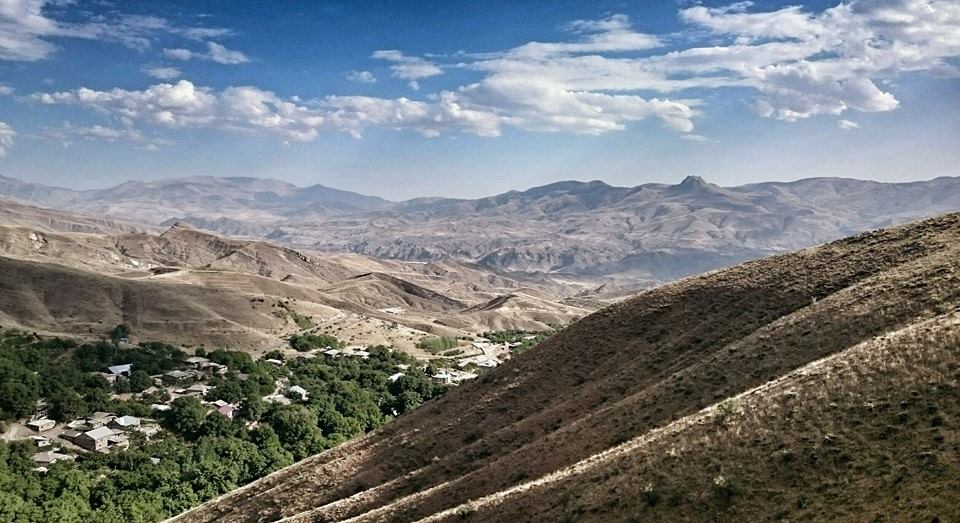
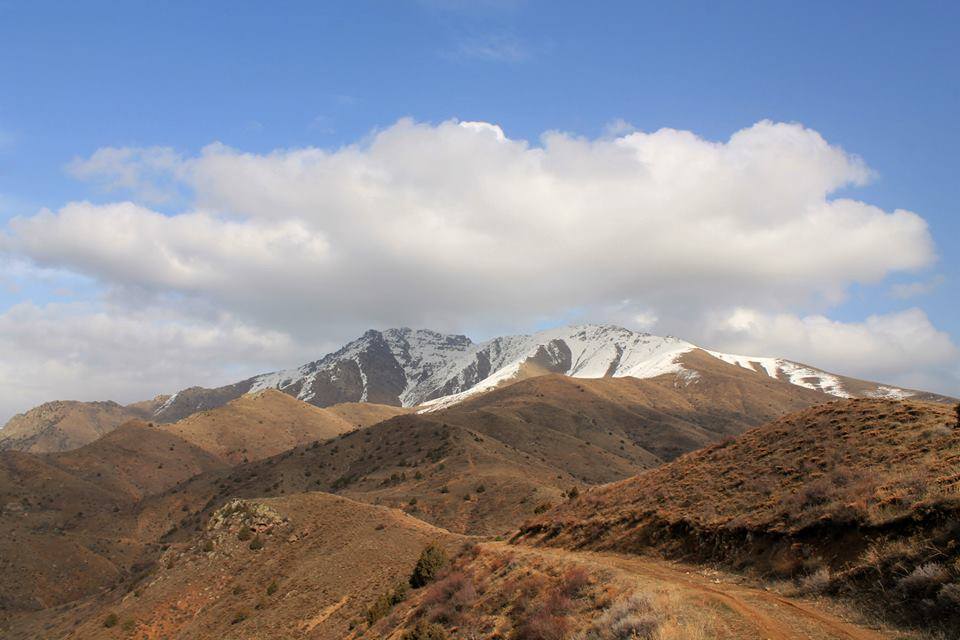

What should you know about the Transcaucasian trail?
The best season is June – October, with a snow chance only at the start and end of the season. As the lowest part of the trails are about 1000 m and the highest are about 3000 m. Trails are not marked in the perfect way, marking can change its colors or might not have it at all. So GPS is recommended, you can download trails on the official web. In general, Georgian trails are better marked than Armenian.
Also be ready for washed of bridges, fast river crossing, shower rains, and extreme weather conditions. You can meet sheep in the mountains, if you meet the pack of sheep or goats probably it is secured by a dog. In general, dogs are friendly in the Caucasus, but these ones are on duty, caucasian shepherd dog is a huge animal raised to protect cattle from predators. For your own safety, better take the long way to avoid cattle, or wait till people will come, dogs will not leave cattle for you so on the distance you should be safe. If dogs decide to come closer to you to bark and explain who is the owner here, don’t run. Just stand till the shepherd comes, or slowly leave with face to them. If you are in a group keep being closer.
On the same parts of the trail there are no guesthouses, so be ready to spend nights in a tent and have enough food with you. River water is drinkable, but you never know what lays down in the stream. Maybe cattle came to drink there, so better use water cleaning solutions.
Keep in mind that, it is a brand new trail and still under development. So you can not hit it all in one hike. It is split into parts about 100-150 km so if you want to manage it in 2 trips, you will need to travel between sections in Georgia and Armenia. The first section takes about 10 days, so it is perfect for the summer with a 2-week vacation.

How to get on start and leave the Transcaucasian trail?
There isn’t one answer for all sections. Public transport is available, also taxi transfers will be affordable if you travel in group of 2 or more people. If you are limited in the time we advise you to use transfer, also you can take a driver number for an escape call, he will be happy. Anyway if you don’t have time for planning, need a helping hand or free advice feel free to contact us.
Recent Articles
Self-guided Walking Tours – Everything You Need to Know
Self-guided walking tours weren’t a common solution to use for travelers till Covid-19 came into the game. But it wasn’t something new…
Tusheti National Park
Tusheti National Park is a huge National reserve on the East Caucasus Mountains. It is located in the structural basin of Tusheti,…
Omalo-Shatili hiking trail in Georgia
Everything you need to know about Omalo-Shatili hike, learn what to expect, when to go at one of the most popular trails in Georgia.

